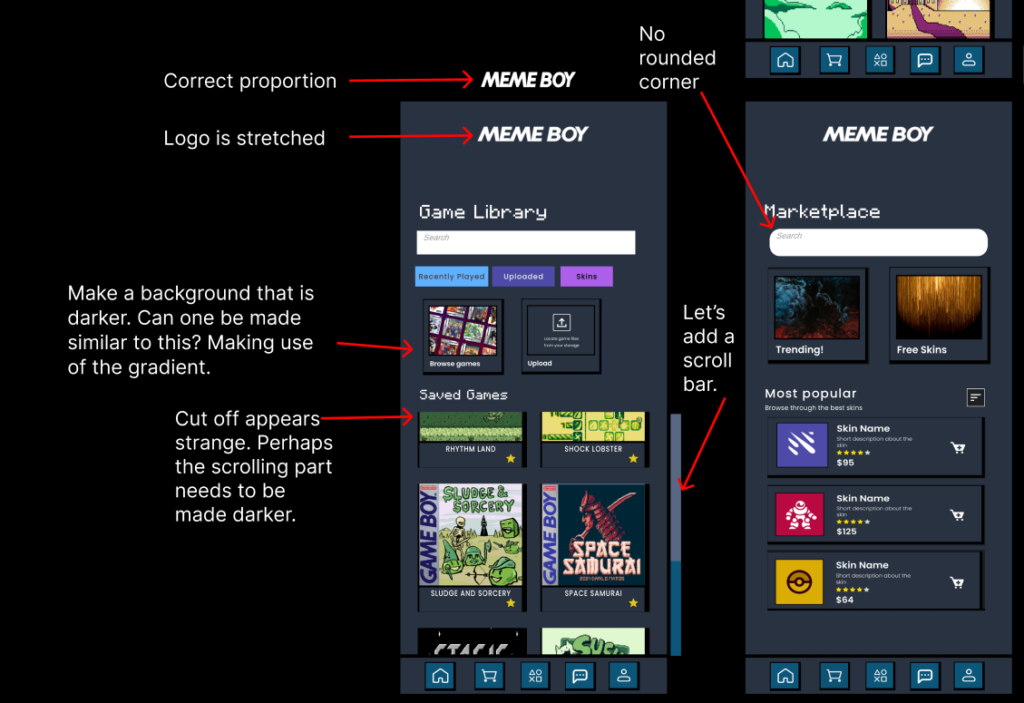Overview
In developing the ‘Meme Boy Emulator,’ I prioritized engaging with the retro gaming community to capture the essence of the classic Game Boy experience for modern mobile users. This involved extensive market research to understand current offerings and identify areas for improvement. Collaborating with retro gamers provided invaluable insights, leading to a user-centered design that balances nostalgia with contemporary usability. The process emphasized intuitive controls and customizable features, catering to both traditional and modern gaming preferences. This project highlights my commitment to integrating user feedback into innovative UX/UI design.
Open Source | Public Domain
The ‘Meme Boy Emulator’ was carefully crafted, focusing on legal compliance and ethical gaming practices. We exclusively used public domain and freely available games, avoiding copyright infringement. This approach, coupled with extensive community engagement, helped us create a user-centered emulator that’s both nostalgic and game developer friendly.
Process
•Research
•Information Architecture
•Wireframe
•UI Design
•User Testing
•Conclusion
Participants
User Persona

Basic Information
Name: Samuel Shin
Age: 30
Occupation: Illustrator at the NFL
Location: Los Angeles, CA
Background
- Has a degree in Illustration, with a strong focus on digital illustration.
- Grew up immersed in the worlds of Marvel comics and superheroes.
- Avid fan of retro gaming, having played classic games since childhood.
Behaviors
- Spends long hours creating dynamic digital illustrations for NFL’s social media platforms.
- Enjoys winding down by watching Marvel movies and reading comic books.
- Utilizes breaks and free time to indulge in retro gaming, reliving favorite childhood games.
Frustrations
- Struggles to find time for hobbies due to a busy work schedule.
- Often disappointed by the lack of authentic retro gaming experiences in modern emulators.
- Challenges in finding like-minded individuals who share his interests in comics and retro gaming.
Goals and Motivations
- Seeks to balance a demanding professional life with engaging recreational activities.
- Desires to stay connected to his childhood passions through gaming and comics.
- Looks for ways to incorporate elements of his favorite comics and games into his creative work.
Testing and Interviews
Approach: Our approach was centered around in-depth user testing and interviews within the retro gaming community. This method was chosen to ensure that the development of the emulator was deeply informed by the actual users’ needs and preferences.
Interviews:
- Target Group: Engaged with avid retro gamers to gather insights.
- Discussion Points: Explored what gamers sought in an emulator, focusing on aspects like customizability, accessibility, and social features.
- Community Integration: Sought views on incorporating homebrew content, especially homemade Game Boy games.
User Testing:
- Testing Phases: Conducted multiple rounds of user testing to refine the emulator’s functionality and interface.
- Feedback Implementation: Continuously integrated user feedback to enhance user interface smoothness and overall functionality.
- User Experience Focus: Prioritized building a user interface that was intuitive, accessible, and appealing to both new and seasoned gamers.
Testing and Interviews
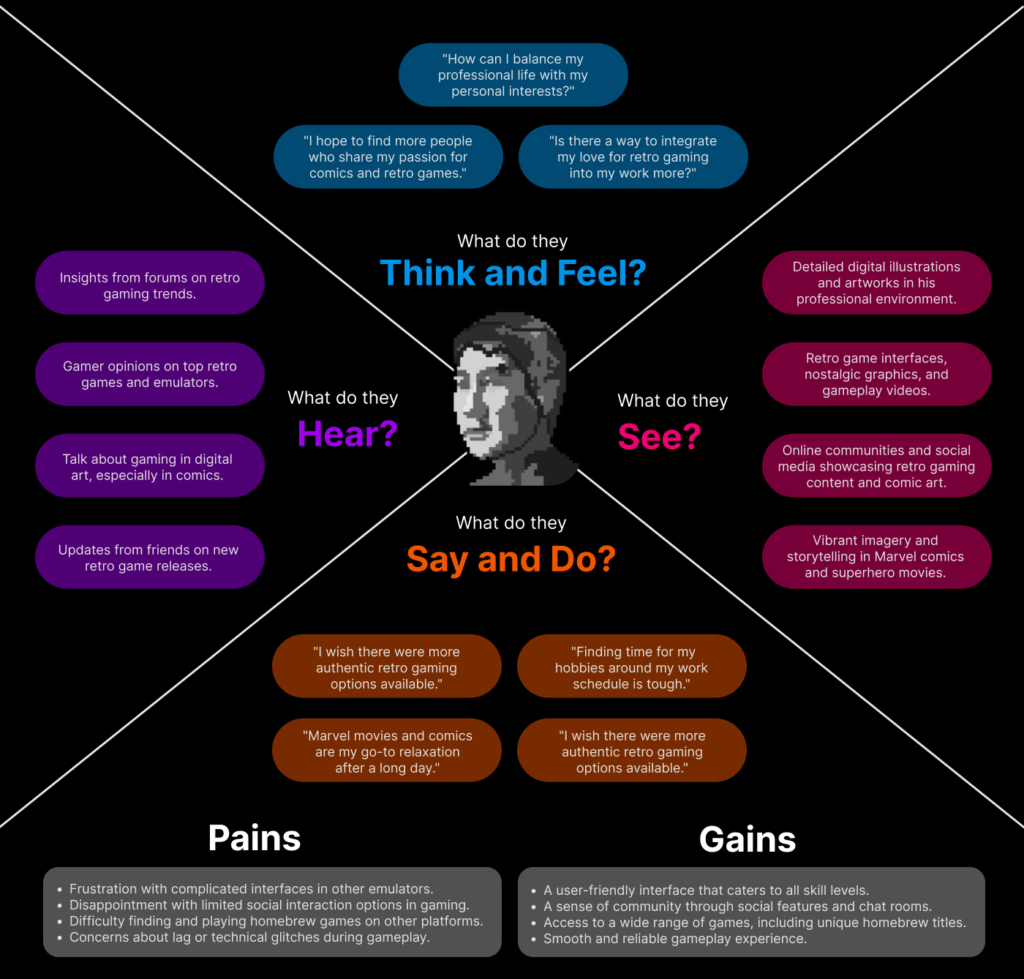
Information Architecture
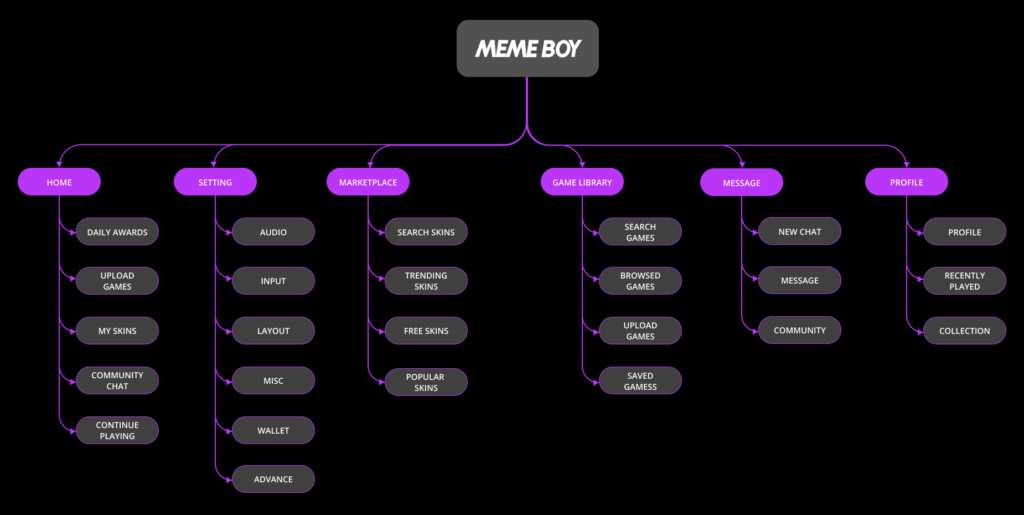
Lo-fi Wireframe
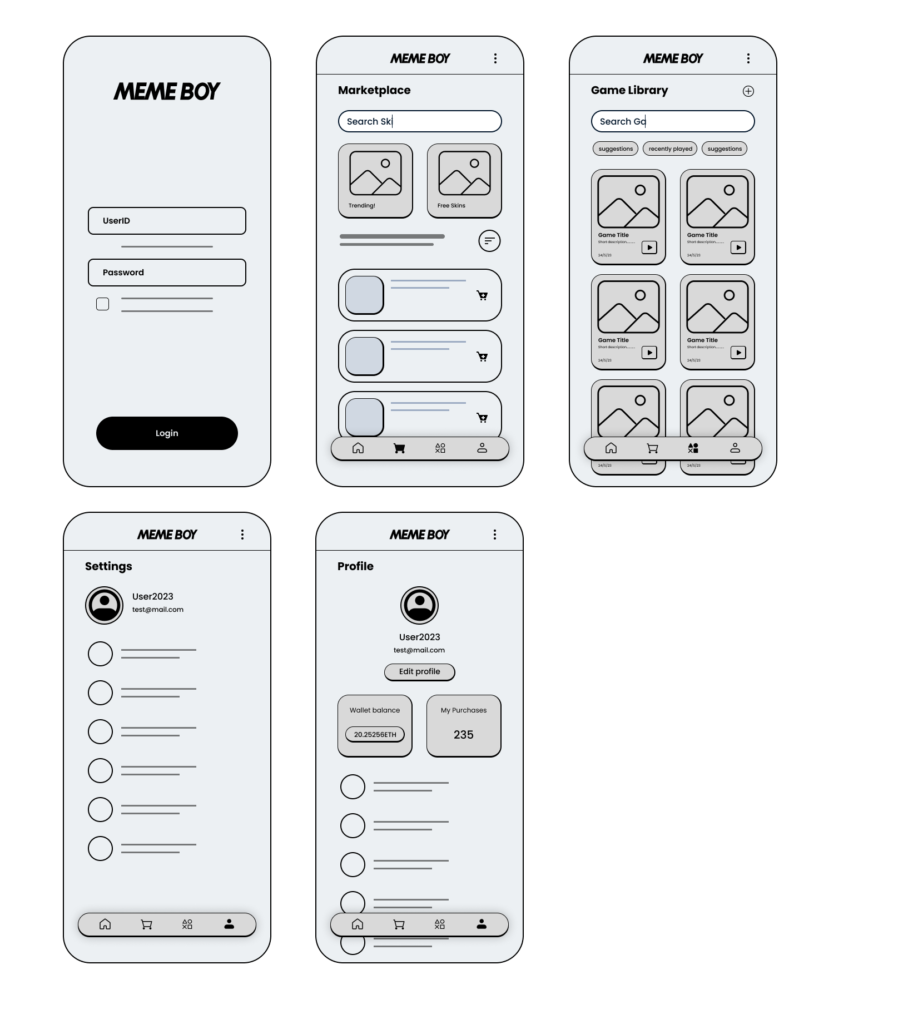
User Interface
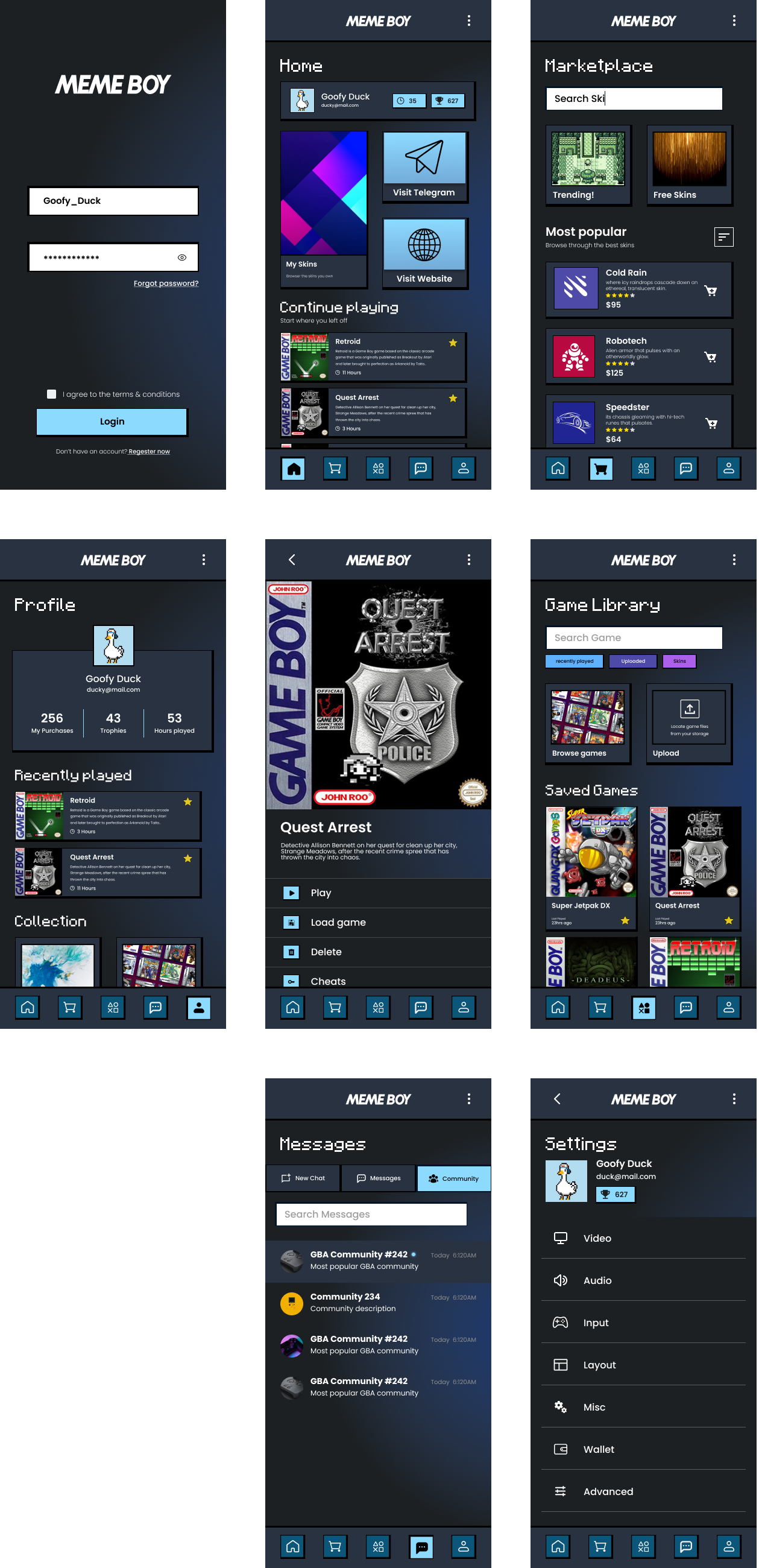
Beta Testing
User Feedback
